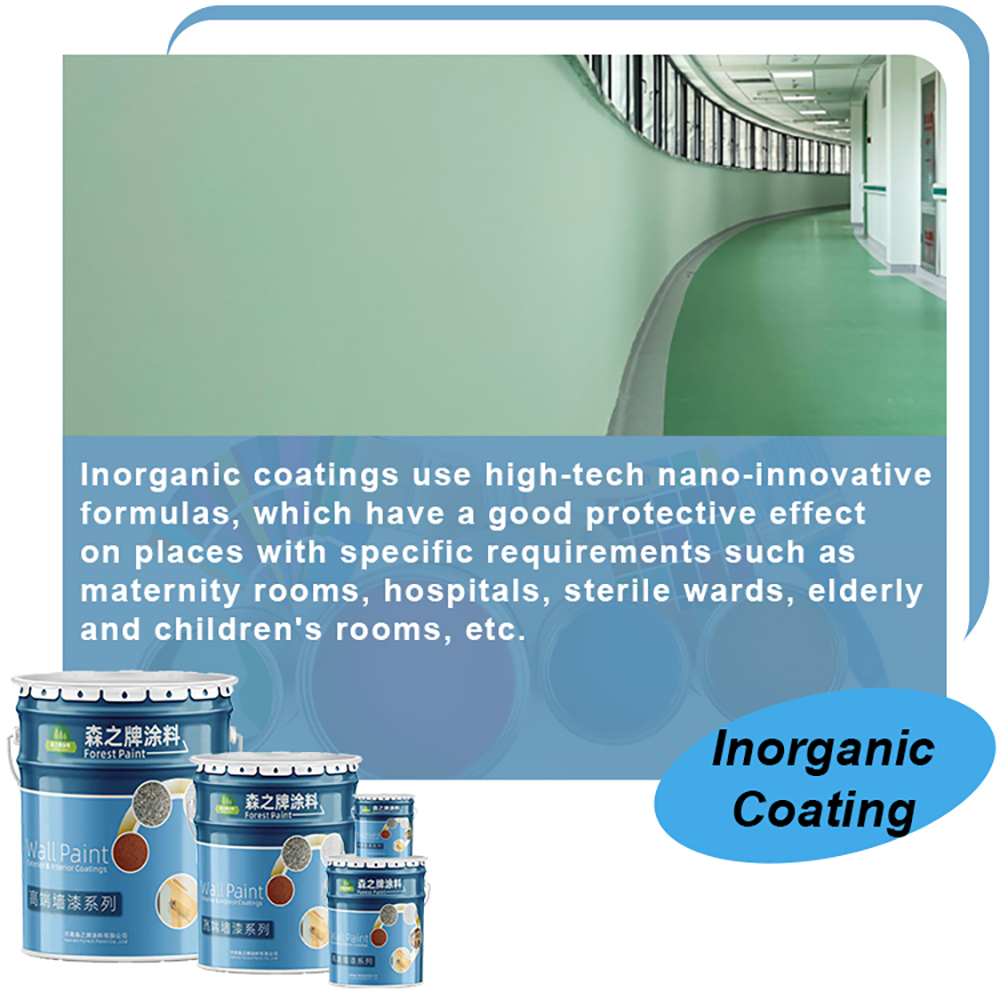Inorganic coatings are coatings with inorganic substances as the main components, usually composed of minerals, metal oxides and other inorganic compounds. Compared with organic coatings, inorganic coatings have better weather resistance, high temperature resistance and chemical resistance, and are widely used in construction, industry and art.
1. Composition of inorganic coatings
The main components of inorganic coatings include:
Mineral pigments: such as titanium dioxide, iron oxide, etc., provide color and hiding power.
Inorganic adhesives: such as cement, gypsum, silicate, etc., which play the role of bonding and fixing.
Filler: such as talcum powder, quartz sand, etc., to improve the physical properties and construction performance of the coating.
Additives: such as preservatives, leveling agents, etc., to enhance the performance of the coating.
2. Characteristics of inorganic coatings
Environmental protection: Inorganic coatings do not contain organic solvents and have extremely low volatile organic compounds (VOCs), meeting environmental protection requirements.
Weather resistance: Inorganic coatings have good resistance to natural environmental factors such as ultraviolet rays, rain, wind and sand, and are suitable for outdoor use.
High temperature resistance: Inorganic coatings can withstand high temperatures and are suitable for coating needs in high temperature environments.
Fire retardancy: Inorganic coatings generally have good fire retardancy and can effectively reduce the risk of fire.
Antibacterial: Certain inorganic coatings have natural antibacterial properties and are suitable for use in places with high hygiene requirements such as hospitals and food processing.
3. Application of inorganic coatings
Inorganic coatings are widely used in the following fields:
Architectural coatings: used for exterior walls, interior walls, floors, etc. to provide protection and decorative effects.
Industrial coatings: used for mechanical equipment, pipelines, storage tanks, etc., to provide corrosion and wear protection.
Artistic Paint: Used for artistic creation and decoration, providing rich colors and textures.
Special coatings: such as fire retardant coatings, antibacterial coatings, etc., to meet the needs of specific industries.
4. Future Development Trends
With the enhancement of environmental awareness and the advancement of technology, the market demand for inorganic coatings is gradually increasing. In the future, inorganic coatings will develop in the direction of higher performance, more environmental protection and more beautiful appearance. It will be an important task for the industry to develop new inorganic coatings and improve their application scope and performance.
Post time: Mar-13-2025


